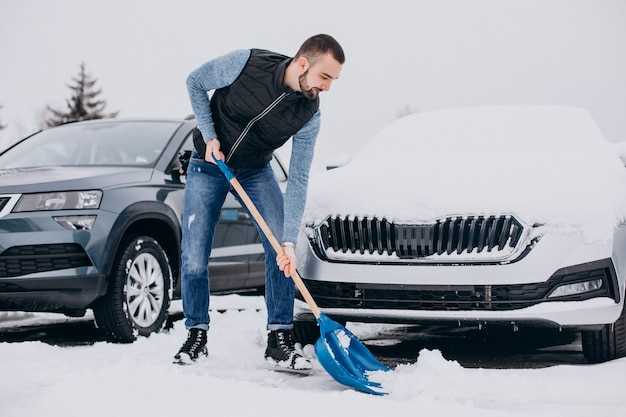
For classic Porsche enthusiasts, preservation of their prized vehicles during winter months is crucial. The cold weather can pose significant threats to the performance and longevity of these iconic cars if not properly cared for. Understanding the essential practices for winter storage can greatly enhance the durability and appearance of your classic Porsche.
Effective storage solutions extend beyond simply parking your car in a garage. It involves a careful assessment of environmental factors, thorough maintenance routines, and proper protective measures. By following best practices, you can ensure that your Porsche is not only safe from the harsh winter conditions but also ready to perform at its peak when the warmer months return.
In this article, we will explore key strategies and tips to facilitate the proper storage of your classic Porsche during the winter season. From ideal location choices to essential winter preparation tasks, this guide aims to provide you with the knowledge needed for optimal preservation.
Preparing Your Classic Porsche for Winter: Key Steps

As temperatures drop and winter approaches, it’s essential to take proper measures to ensure the preservation of your classic Porsche. Proper preparation not only protects the car from harsh weather conditions but also maintains its value over time. Here are some key steps to prepare your vehicle for the winter months.
1. Thorough Cleaning
Begin by giving your classic Porsche a thorough wash and wax. This helps remove dirt, road salt, and grime that can cause corrosion during winter storage. Pay special attention to the undercarriage and wheel wells, as these areas are more susceptible to rust.
2. Fluid Checks and Changes
Next, check and replace essential fluids. Change the oil and filter to prevent contaminants from settling during storage. Ensure that the coolant system is filled with antifreeze to prevent freezing and damage to the engine. Don’t forget to check the brake fluid and transmission fluid levels as well.
3. Battery Maintenance
Remove the battery and store it in a cool, dry place. Consider using a battery maintainer or trickle charger to keep it charged throughout the winter months. This helps prevent deterioration and ensures that your Porsche is ready to go when spring arrives.
4. Tire Care
Check the tire pressure and inflate them to the recommended levels. If possible, consider using jack stands to lift the vehicle off the ground, preventing flat spots from forming. Alternatively, rotate the tires occasionally to avoid pressure points.
5. Covering the Vehicle
Invest in a high-quality car cover designed for winter storage. A breathable cover will protect your classic Porsche from dust and moisture while allowing any trapped moisture to escape, preventing mildew and rot.
6. Interior Protection
To prevent damage to the interior, remove any perishables and use moisture-absorbing products. Protect the upholstery with appropriate covers and ensure that the windows are completely closed to keep the elements out.
By following these key steps, you can ensure that your classic Porsche remains in excellent condition throughout the winter months. Proper preservation now will guarantee that your beloved car is ready to hit the road when warmer weather returns.
Optimal Storage Conditions: Temperature and Humidity Control

Proper storage of your classic Porsche requires careful consideration of temperature and humidity levels. Ideal storage conditions play a vital role in preserving the car’s condition and preventing deterioration.
The optimal temperature for storing your vehicle typically ranges between 50°F and 70°F (10°C and 21°C). Maintaining this temperature range helps prevent issues such as oil thickening, rubber deterioration, and metal corrosion. Extreme cold can cause fluids to freeze, while excessive heat may lead to overheating components, even in a stationary car. It’s crucial to keep the storage environment stable, avoiding drastic temperature fluctuations that can stress various materials in the vehicle.
Humidity control is equally important, with ideal levels kept between 30% and 50%. High humidity can promote rust and mold growth, especially on metal surfaces and upholstery. To guard against these problems, consider using a dehumidifier during the winter months to maintain consistent air moisture levels. Conversely, excessively low humidity may dry out rubber seals and leather interiors, thus affecting their integrity over time.
Utilizing climate control systems, such as heating and cooling solutions, ensures that your classic Porsche remains in optimal condition throughout the storage period. Regular monitoring of temperature and humidity levels can help you adjust settings as needed, providing your vehicle with the best possible environment until it’s time to take it out on the road again.
By addressing both temperature and humidity, you can ensure your classic Porsche remains in peak condition, ready to deliver the driving experience you cherish when the winter season comes to an end.
Maintenance Tips During Storage: Fluids, Tires, and Battery Care
Proper preservation of your classic Porsche during winter storage involves careful attention to fluids, tires, and battery maintenance. Each of these components plays a crucial role in ensuring your car remains in optimal condition.
Firstly, addressing fluids is essential. Start by changing the engine oil and filter to remove contaminants that could cause corrosion. It’s advisable to fill the gas tank to prevent moisture accumulation, and adding a fuel stabilizer can help preserve the fuel’s integrity over extended periods. Additionally, consider flushing and replacing the coolant to protect the cooling system from freezing temperatures and prevent rust formation.
Tire maintenance is another vital aspect. Inflate your tires to the manufacturer’s recommended pressure to prevent flat spots when the car is stationary. If possible, consider using tire cradles or placing the car on jack stands to reduce weight on the tires. For long-term storage, periodic rotation of the tires can also aid in maintaining their shape and performance.
Lastly, battery care cannot be overlooked. Disconnect the battery to prevent drain, and if feasible, connect it to a battery maintainer that offers a trickle charge. This will help keep the battery at an optimal charge level throughout the storage period. Alternatively, consider removing the battery entirely and storing it in a controlled environment.
By following these maintenance tips, you ensure that your classic Porsche experiences minimal wear during winter storage, ultimately preserving its longevity and performance for future drives.
 Skip to content
Skip to content





